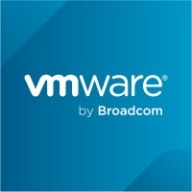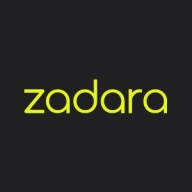


Zadara and VMware Software Defined Storage compete in the storage management category. Zadara appears to satisfy users with its pricing and support, while VMware's performance and functionality are deemed to justify its cost.
Features: Zadara integrates seamlessly with cloud services, supports hybrid storage options, and offers a managed service model with dedicated expertise. VMware Software Defined Storage offers features like high availability, redundancy, and scalability that are crucial for IT administrators, making it a preferred choice for robust enterprise deployments.
Room for Improvement: Zadara could improve its proactive patch management and accelerate feature releases like auto-tiering, while it also needs to broaden its compute service offerings. VMware needs to enhance its performance to keep up with competitors like ScaleIO, improve its hardware compatibility, and reconsider its pricing structure due to high initial costs and licensing limitations.
Ease of Deployment and Customer Service: Zadara provides flexible deployment across public and hybrid clouds with 24/7 proactive customer service, beneficial for continuous operations. VMware focuses on on-premises deployments and is noted for effective customer support, although it lacks Zadara’s round-the-clock service.
Pricing and ROI: Zadara's predictable pay-as-you-go pricing aligns infrastructure costs with customer needs, leading to savings and significant ROI. In contrast, VMware Software Defined Storage is considered expensive due to upfront and licensing fees, which can be a barrier despite its functionality.
| Product | Market Share (%) |
|---|---|
| Pure Storage FlashBlade | 4.1% |
| VMware Software Defined Storage | 1.4% |
| Zadara | 2.0% |
| Other | 92.5% |



| Company Size | Count |
|---|---|
| Small Business | 11 |
| Midsize Enterprise | 11 |
| Large Enterprise | 20 |
| Company Size | Count |
|---|---|
| Small Business | 2 |
| Midsize Enterprise | 1 |
| Large Enterprise | 6 |
| Company Size | Count |
|---|---|
| Small Business | 12 |
| Large Enterprise | 3 |
FlashBlade is the industry’s most advanced scale-out storage for unstructured data, powered by a modern, massively parallel architecture to consolidate complex data silos (like backup appliances and data lakes) and accelerate tomorrow’s discoveries and insights.
VMware software-defined storage is a simple, yet intelligent, storage data center architecture that aligns with business and application demands—eliminating static, purpose-built and inefficient hardware with dynamic, agile and automated solutions.
Zadara is a powerful enterprise-level storage solution whose design enables it to handle every aspect of a user’s data storage needs. It can be deployed in any location, using any protocol, and storing any data type that an organization requires. With Zadara, organizations can do everything that they were able to do with more traditional systems in a cheaper and more efficient way.
Zadara Benefits
Some of the ways that organizations can benefit by choosing to deploy Zadara include:
Zadara Features
File analytics. Organizations can leverage a powerful analytics package that can provide them with critical insights. These tools can help users sort through their data and make more informed data management decisions.
Reviews from Real Users
Zadara is a highly effective solution that stands out when compared to many of its competitors. Two major advantages it offers are its extensive suite of cloud solution integrations and its object storage capability.
Steve H., the chief technology officer at Pratum, writes, “One of the most valuable features is its integration with other cloud solutions. We have a presence within Amazon EC2 and we leverage computer instances there. Being able to integrate with computing, both locally within Zadara, as well as with other cloud vendors such as Amazon, is very helpful, while also being able to maintain extremely low latency between those connections.”
Mauro R., the CEO of Momit SRL, says, “The object storage feature is wonderful. With traditional storage, you have a cost per gigabyte that is extremely high or related to the number of disks. With Zadara Storage Cloud, you have a cost per gigabyte that you can cut and tailor to your needs independent of the number or size of the disks.”
We monitor all Software Defined Storage (SDS) reviews to prevent fraudulent reviews and keep review quality high. We do not post reviews by company employees or direct competitors. We validate each review for authenticity via cross-reference with LinkedIn, and personal follow-up with the reviewer when necessary.